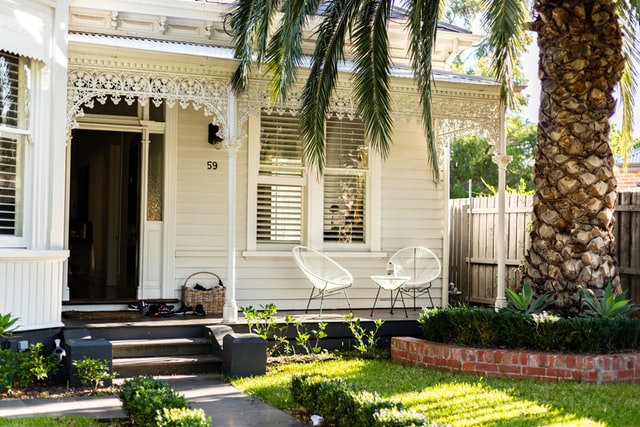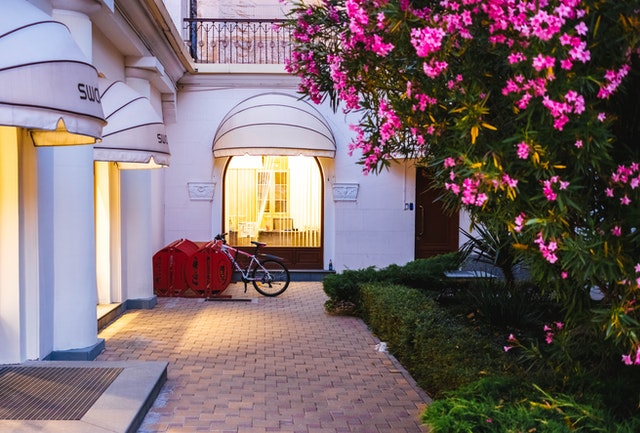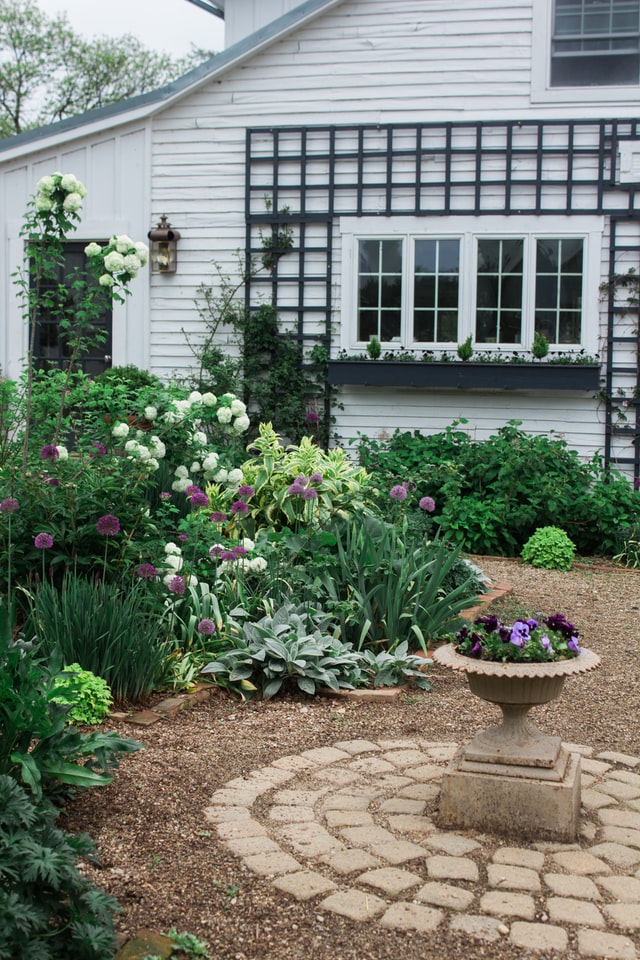Rather like gates and white fences, you will often have to look through or behind garden seats to be able to paint them successfully. But tree is also another element to be considered here. Gardens in the summer are usually awash with long shadows cast by tall, overgrown trees. These shadows fall indiscriminately and follow the shape of any objects that they fall onto. If, for example, a curved garden seat is in the line of a cast shadow, the shadow will follow the curve, helping to define the shape of the seat more clearly, turning the shadow to your advantage.
Painting Dappled Shadows
Dappled shadows are a frequent feature of summer garden living. These are best painted initially onto dry paper, using a medium-size brush to “draw” the shapes created onto the surface. To create a sense of depth with these shadows, however, use a small brush and wash out the farthest distant shadows a little, softening the edges nod leading the viewer’s eye out toward the middle ground. The basic color mix that I use for strong summer shadows is based upon French.
Ultramarine and Alizarin crimson, although I occasionally find it useful to add a little Winsor Violet (dioxazine) to strengthen the mix when required. For slightly softer shadows I use Ultramarine Violet, darkened with French Ultramarine or, again, softened a little with cobalt Blue.
This small study of a very ordinary-looking garden seat was enhanced by careful choice of tones of green for the surrounding foliage. The darkest greens were mixed with sap Green, French Ultramarine, and a touch of Burnt Umber to make the wooden slats of the seat stand out.
Courtyards And Patios
For many people, paved courtyard, terrace, or patio is an ideal extension of the house, allowing tables and chairs to be set out on a solid surface without fear of muddy shoes or sinking chair legs.
The main themes to consider when painting courtyards are stone and tile textures; initially from the floor, but also from the type of ornamentation often found in these areas. As there is no ground in which to grow flowers or shrubs, pots and containers tend to be featured, injecting a sense of color and natural growth into an otherwise cold stone environment.
Continental Courtyard
9 ½ x8 in (24×20 cm)
Wet bleeds, warm Mediterranean violets, read and yellows, and strong shadows all work in harmony brew. A “one stroke” approach was used for shadows on the white tablecloth and vase. Ares of white wall showing through the dappled shadows break up any feeling of solidity.
This old Greek urn, set on a terracotta-tiled floor, was certainly worthy of a study. The rusting metal bar was created by applying pure Burnt Seined to dry paper. Then dropping water on before in dried and allowing this to bleed outward. The surface of the put was produced by dropping colors onto damp paper and allowing them to bled or separate, according to the nature of the pigment.
Painting Stone
The key to painting stone is to use vast amounts of water and apply the pint with vigor, flicking the colors on separately. First flick a little Raw Sienna onto wet paint, then quickly flick some Burnt Sienna, followed by Burnt umber and French Ultramarine. For large areas of paint try dipping a toothbrush into paint and flicking this, but be careful as the paint will fly in all directions unless you angle it carefully at the section of paper you with to paint.
Finally, y blotting. A “crunched up” piece of paper towel can be used to boot some excess water and paint form stone areas. This not only soaks up water, but also forces some paint into the fibers of the paper as they come into contact with it, creating extra texture to add to the previous washing and flicking.
A felling of “cold” stone can be achieved by working onto a dry underwash of Raw Umber. A sliver of unpainted paper represent s the tops of the curves. Running a line of paint onto dry paper underneath a decoration or ridge also helps to reinforce the shape as it dries with a hard edge.





